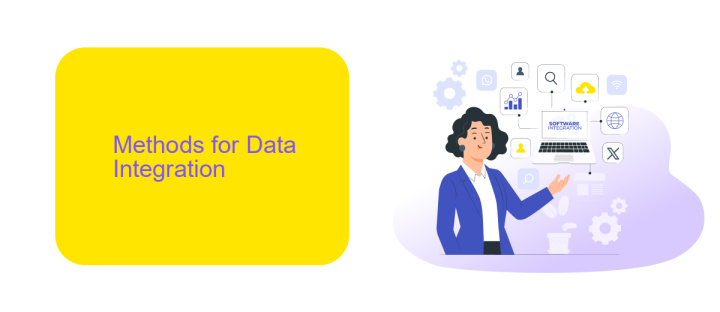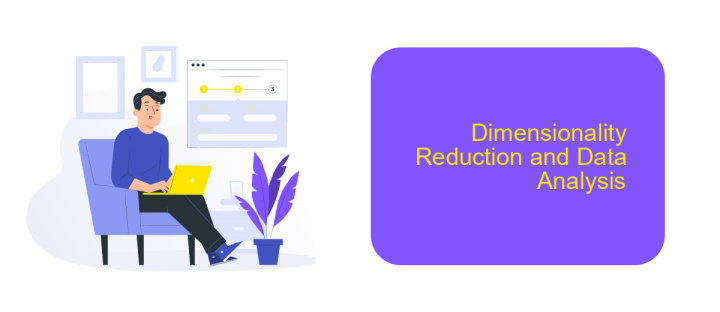Single Cell Data Integration
Single cell data integration is a critical technique in modern genomics, enabling researchers to combine and analyze data from individual cells across different experiments and conditions. This approach facilitates a deeper understanding of cellular diversity and function, paving the way for breakthroughs in areas such as cancer research, developmental biology, and personalized medicine. By integrating single cell data, scientists can uncover hidden patterns and gain new insights into complex biological systems.
Introduction
Single cell data integration is a rapidly evolving field that aims to combine diverse single-cell datasets to gain comprehensive insights into cellular heterogeneity and function. As the volume and complexity of single-cell data continue to increase, the need for effective integration methods becomes more critical. This process enables researchers to draw more robust conclusions and uncover hidden biological patterns.
- Combining datasets from different sources and technologies
- Aligning and normalizing data to ensure consistency
- Utilizing computational tools and algorithms for integration
- Addressing challenges such as batch effects and data sparsity
Several platforms and services facilitate the integration of single-cell data. One notable example is ApiX-Drive, which offers streamlined, automated solutions for connecting various data sources and tools. By leveraging such services, researchers can focus more on their scientific inquiries and less on the technical challenges of data integration, thereby accelerating discoveries in the field of single-cell biology.
Methods for Data Integration

Single cell data integration involves combining data from various single cell experiments to create a comprehensive dataset. This process typically begins with data preprocessing, which includes normalization, scaling, and batch effect correction to ensure consistency across datasets. Techniques such as Seurat and Scanpy are widely used for these tasks, leveraging algorithms like principal component analysis (PCA) and mutual nearest neighbors (MNN) to align and integrate datasets effectively.
Advanced data integration methods employ machine learning algorithms to enhance the accuracy and efficiency of integration. Tools like Harmony and LIGER are notable for their ability to handle large-scale single cell data. Additionally, services like ApiX-Drive can facilitate seamless integration by automating data workflows and connecting various data sources, ensuring a streamlined process. By utilizing these methods and tools, researchers can achieve a more holistic understanding of cellular heterogeneity and complex biological systems.
Normalization and Quality Control

Normalization and quality control are essential steps in single-cell data integration to ensure reliable and accurate results. These processes help mitigate technical variability and enhance the biological signal, which is crucial for downstream analyses.
- Data Normalization: This step involves scaling and transforming raw data to make it comparable across different cells and conditions. Common methods include log transformation and scaling to a fixed range.
- Quality Control: Identifying and filtering out low-quality cells or genes is vital. Metrics such as mitochondrial gene expression, total gene count, and unique molecular identifiers (UMIs) are often used to assess quality.
- Batch Effect Correction: Integrating data from multiple sources or experiments might introduce batch effects. Techniques like ComBat or Harmony can be applied to correct these biases.
Implementing these steps ensures that the integrated single-cell dataset is robust and reliable. Tools like ApiX-Drive can automate parts of this workflow, facilitating seamless integration and quality control across various data sources. This automation saves time and reduces potential errors, enhancing the overall efficiency of the data integration process.
Dimensionality Reduction and Data Analysis

Dimensionality reduction is a crucial step in single cell data analysis, aimed at simplifying the complexity of high-dimensional data while retaining essential information. Techniques such as PCA (Principal Component Analysis) and t-SNE (t-Distributed Stochastic Neighbor Embedding) are commonly used to reduce the number of variables and visualize data in two or three dimensions.
Effective data analysis in single cell studies involves various computational and statistical methods to interpret the reduced data meaningfully. This process helps in identifying patterns, clusters, and significant biological insights from the dataset.
- PCA: Reduces dimensions by transforming data into principal components.
- t-SNE: Visualizes high-dimensional data by mapping it into a lower-dimensional space.
- UMAP: Preserves the global structure of data while reducing dimensions.
Moreover, tools like ApiX-Drive can facilitate the integration of various data sources, enhancing the robustness of single cell data analysis. By automating data workflows, ApiX-Drive ensures seamless data integration and preprocessing, which is vital for accurate dimensionality reduction and subsequent analysis.
Case Studies and Applications
Single cell data integration has been pivotal in advancing our understanding of complex biological systems. For instance, in oncology, integrating single cell RNA sequencing data from multiple sources has enabled researchers to identify rare cancer cell subpopulations and their unique gene expression profiles. This has led to the discovery of novel therapeutic targets and personalized treatment strategies, significantly improving patient outcomes. Additionally, in immunology, single cell data integration has facilitated the mapping of immune cell diversity and function, providing insights into immune responses and potential interventions for autoimmune diseases.
In practical applications, tools and services like ApiX-Drive have streamlined the integration process. ApiX-Drive allows researchers to automate data workflows, ensuring seamless integration of single cell datasets from various platforms. This automation reduces manual errors and accelerates data analysis, making it easier for scientists to derive meaningful insights. By leveraging such services, research teams can focus more on data interpretation and less on technical challenges, thereby enhancing the overall efficiency and effectiveness of single cell studies.
FAQ
What is Single Cell Data Integration?
Why is Single Cell Data Integration important?
What are the common challenges in Single Cell Data Integration?
How can automation tools help in Single Cell Data Integration?
What are some best practices for Single Cell Data Integration?
Apix-Drive will help optimize business processes, save you from a lot of routine tasks and unnecessary costs for automation, attracting additional specialists. Try setting up a free test connection with ApiX-Drive and see for yourself. Now you have to think about where to invest the freed time and money!

